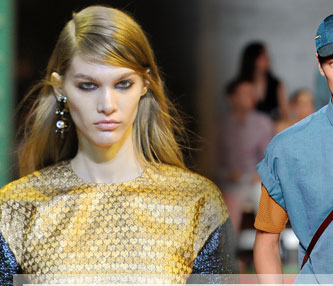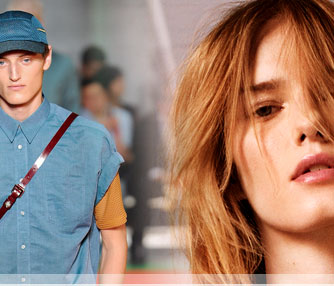1964
In 1964, Kenzo Takada moved to Paris. He took some time to settle in, but eventually he started sketching. The revolutionary new outfits by Courreges were the inspiration for a series of 30 designs he made, 5 of which were accepted by designer Louis Feraud. Over the next few years, he worked for various departmental stores, the Pisanti textile group and Relations Textiles.
1970
In 1970, Kenzo took over a former antique clothing store in disrepair and painted it himself. Then cutting and sewing a collection of his own designs, he took them round to the fashion magazines. His clothes started attracting notice. A boutique in the Galeria Vivienne gave him the chance to introduce his own style to Parisiennes. He opened his own boutique called "Jungle Jap" selling loose casual clothes, smock tent dresses, and huge striped dungarees with elephant legs. He enlarged armholes and changed the shoulder shape and introduced 100% cotton fabrics.
1971
In 1971, Jungle Jap designs were featured in American Vogue as the next development in the Paris boutique scene.
1972
In 1972, Kenzo's show at the Gare d'Orsay was very successful.
1975
In 1975, his first collections were shown in Tokyo.
1977
In 1977, Kenzo presented his collections in New York.
1978
In 1978, he became known as the "Great White designer" although his designs were very colourful indeed and his styles amazingly diverse.
1979
In 1979, his collection was shown in Zurich for the first time.
1990
In 1990 Kenzo's empire expanded to included menswear, jeans, children's wear and other products.
1999
In October 1999, Kenzo presented his final show, handing over the design to Giles Rosier. Kenzo had sold his house to the Luxury group LVMH run by Bernard Arnault.
2003
Antonio Marras is announced as artistic director of Kenzo's womenswear.
2011
In July 2011, LVMH announced the appointment of Humberto Leon and Carol Lim as Creative Directors of Kenzo.













